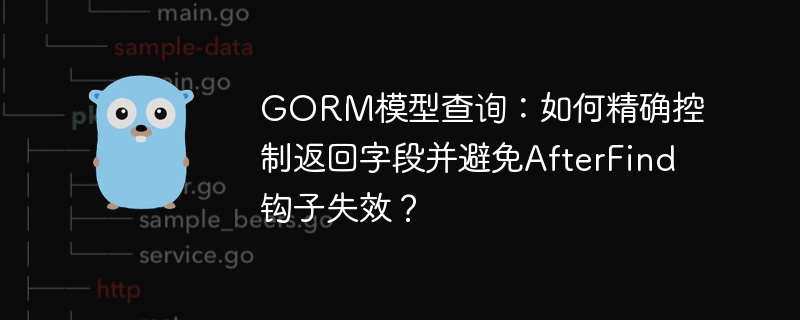
GORM模型查询与字段精细控制:解决AfterFind钩子失效难题
在GORM数据库查询中,精确控制返回字段至关重要。本文将深入探讨如何利用GORM模型仅返回指定列,并解决JSON字段处理中AfterFind钩子失效的问题。
问题描述:
在使用GORM查询post模型时,假设只希望获取id和images两个字段。images字段存储为JSON字符串,并通过AfterFind钩子将其转换为[]postimage数组。然而,不同的接收方式会导致以下问题:
map[string]interface{}接收结果时,AfterFind钩子无法触发,images字段仍为原始JSON字符串。[]post接收结果时,即使select指定了id和images,所有post模型字段都会返回,未被select的字段填充默认值。respost)接收结果,虽然解决了字段控制问题,但代码冗余,与post模型重复。代码示例:
以下为原始代码片段:
package models
import (
"encoding/json"
"gorm.io/gorm"
)
type post struct {
id int `json:"id" gorm:"id;primarykey"`
title string `json:"title" gorm:"title"`
// ...其他字段省略
imagesstr string `json:"-" gorm:"column:images"`
images []postimage `json:"images" gorm:"-"`
}
type postimage struct {
name string `json:"name"`
url string `json:"url"`
}
func (data *post) AfterFind(tx *gorm.DB) error {
// ...代码省略
json.Unmarshal([]byte(data.imagesstr), &data.images)
return nil
}
// 使用map接收
postlist := map[string]interface{}{}
db.Model(&post).Select("id,images").Find(&postlist)
// 使用[]post接收
var postlist []post
db.Model(&post).Select("id,images").Find(&postlist)
// 使用自定义struct接收
type respost struct {
id int
images []postimage
}
var postlist []respost
db.Model(&post).Select("id,images").Find(&postlist)解决方案:
问题的关键在于GORM的Select方法的使用。Select方法的参数并非逗号分隔的字符串,而应为字符串切片。 正确的代码如下:
db.Model(&Post).Select("id", "images").Find(&postlist)通过传入字符串切片[]string{"id", "images"},GORM能够正确生成SQL语句,只选择指定的列。 即使使用[]post作为接收参数,只有id和images字段会被填充,AfterFind钩子也能正常工作,将images字段转换为[]postimage数组。 此方法既保证了代码简洁性,也避免了不必要的结构体定义。
以上就是GORM模型查询:如何精确控制返回字段并避免AfterFind钩子失效?的详细内容,更多请关注php中文网其它相关文章!

每个人都需要一台速度更快、更稳定的 PC。随着时间的推移,垃圾文件、旧注册表数据和不必要的后台进程会占用资源并降低性能。幸运的是,许多工具可以让 Windows 保持平稳运行。

Copyright 2014-2025 https://www.php.cn/ All Rights Reserved | php.cn | 湘ICP备2023035733号